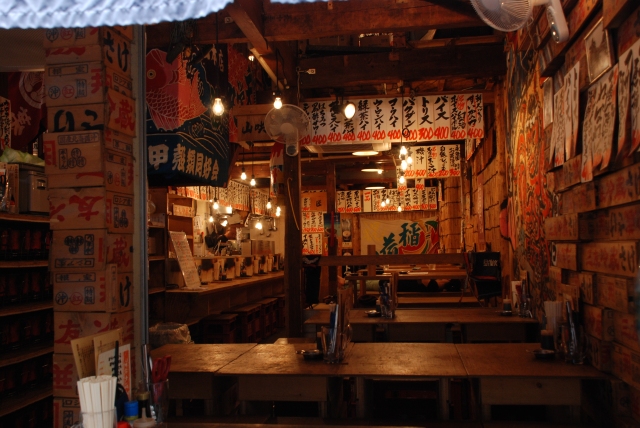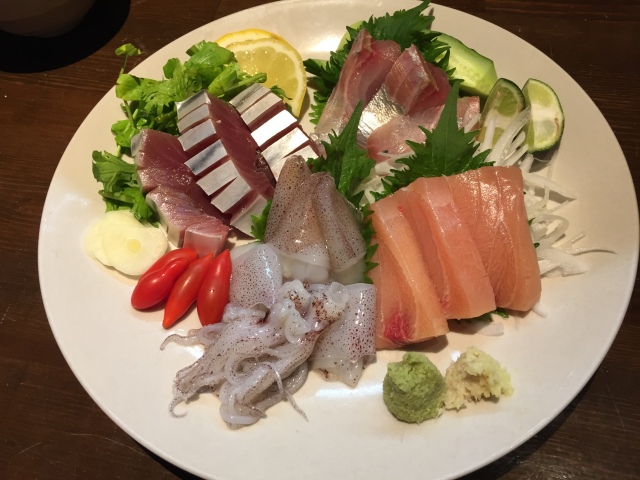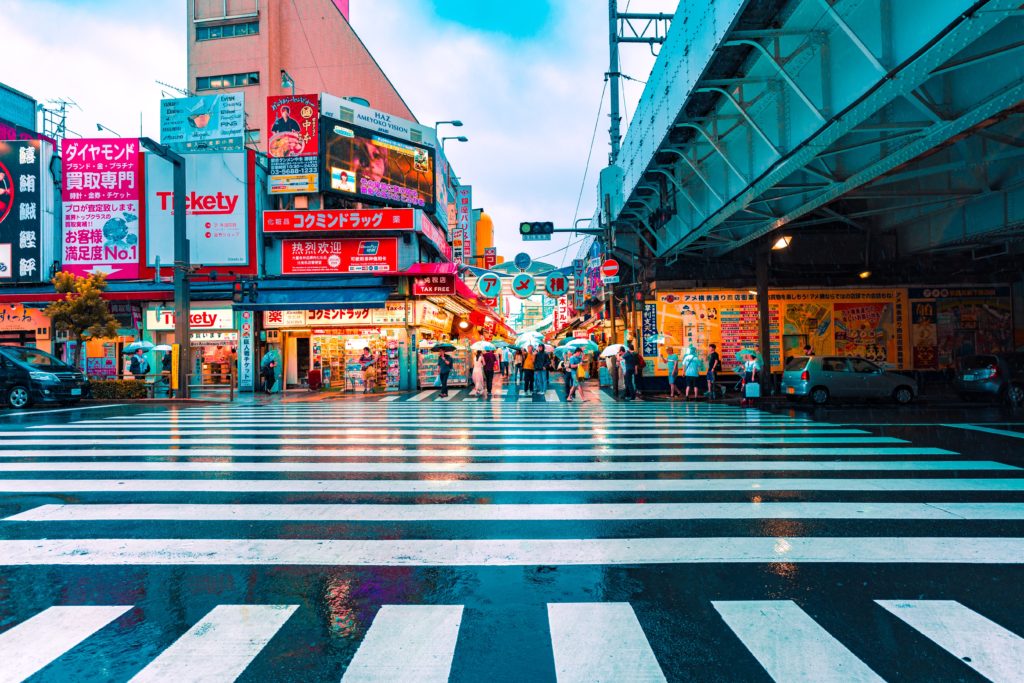Japanese cuisine first went global when sushi shops spread throughout the urban dining landscape. Today, ramen shops are rapidly taking over the restaurant scene of large cities across the world. The next big thing to come out of Japan is the izakaya. Izakaya is spelled 居酒屋 in Japanese which translates to sake shop where you can settle yourself. The first izakayas were nothing more than extensions to sake shop where people could sit down and drink the sake they had purchased. As drinking always involves some eating in Japan, these places soon became as renowned for their food rather than their drinks. Izakayas or aka chochin, as they are sometimes referred to by the red lantern that hangs outside the entrance, are a ubiquitous part of Japanese culture that needs to be understood in its Japanese context.
A place like no other
As soon as you walk through the sliding door of an izakaya, your senses will be flooded by the sound of merry patrons and the smell of fried food and grilled meat emanating from the kitchen. Upon entering, the staff greets you with a loud, “Irrashaimase!”, the polite way to welcome someone in Japan. You will be then given a choice between Western table seating and Japanese tatami floor seating. Japanese seating will require you to remove your shoes just as one does in a Japanese home. The layout of the restaurant is skillfully designed and divided into sections to provide a sense of relative privacy in a country where there is so little of it. It is more than a mere place to relax after a hard day of work, it is a space where friends and coworkers hungry for drinks and food can come to escape the constraints of Japanese society.

Unwritten code
Like everything Japanese, a strict etiquette regulates how people eat and interact in an izakaya. First, the waiter brings oshibori which is a hot or chilled towel, depending on the season, that is used to wipe one’s hand at the beginning and during the meal. Old men and foreigners will use it to wipe their face but it is generally considered untactful to do so. Before any order is placed, otoshi or small bites that serve as a seating fee are brought to the table. The first drink to be ordered, even for women, is oftentimes beer which is required for the opening kanpai, or toast of the night. Izakaya dining is similar to Spanish tapas with small shared plates. Hence, orders are made in rounds that are then shared among the group. Rice dishes are always eaten at the end of the meal as sake, which is also made from rice, replaces the consumption of the grain during the meal.

Navigating the menu
Izakaya menus are separated in several sections that include:
- 生物 (namamono) – Raw foods which are usually seafood but can also be meat (recommendation: sashimi moriawase – chef’s selection of raw fish)
- サラダ (sarada) – Japanese style vegetable salads (recommendation: daikon sarada – white radish salad)
- 揚げ物 (agemono) – Japanese style fried foods (recommendation: karaage – fried chicken)
- 焼き物 (yakimono) – Japanese style grilled foods (recommendation: yakitori – grilled chicken skewers)
- 飯 (meshi) – Japanese style rice or noodle dishes (recommendation: ochazuke – rice and tea porridge)
- 飲み物 (nomimono) – Drinks which usually include beer, wine, sake and shochu (recommendation: nomihodai – all you can drink)


